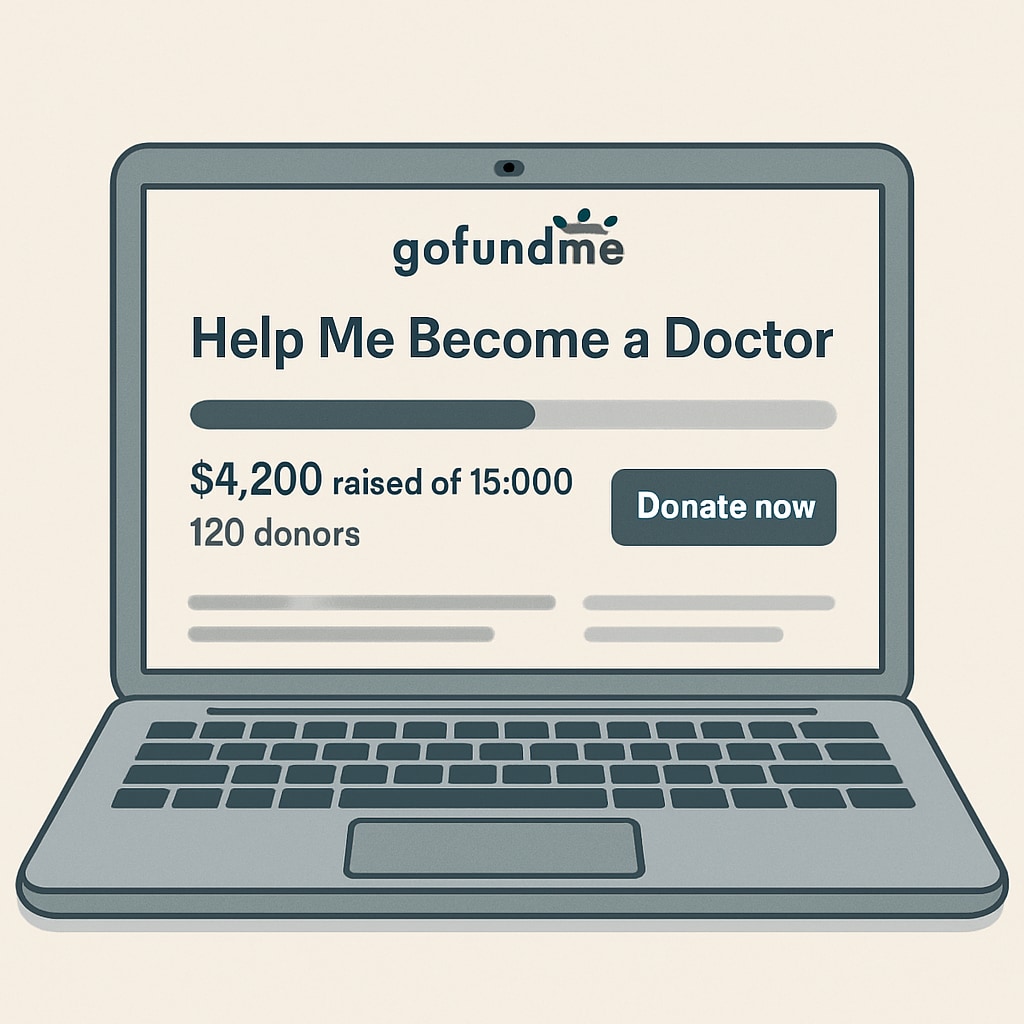For independent students dreaming of medical school, financial challenges often stand as the most significant obstacle to achieving their goals. With rising tuition costs and limited access to traditional support systems, platforms like GoFundMe have emerged as a lifeline for many. By leveraging these innovative social fundraising tools, students can overcome economic barriers and continue their journey toward becoming healthcare professionals.
Understanding the Financial Struggles of Aspiring Medical Students
The path to becoming a doctor is long and expensive. Undergraduate tuition alone can leave students grappling with debt, and applying to medical schools adds another layer of financial strain. Independent students—those without significant parental financial support—face unique challenges, often juggling jobs alongside their studies to cover basic living expenses. As a result, their academic performance and focus may suffer.
For example, the Association of American Medical Colleges (AAMC) reports that the average tuition for medical school in the U.S. exceeds $60,000 annually. This figure doesn’t even account for other related costs, such as application fees, MCAT preparation courses, and travel expenses for interviews. For economically disadvantaged students, these expenses can feel insurmountable.

Social Fundraising as a Solution: How GoFundMe Is Changing Lives
GoFundMe, a popular crowdfunding platform, has become a beacon of hope for students facing financial hardship. Unlike traditional loans or scholarships, GoFundMe allows individuals to tell their personal stories and connect with a broader audience willing to support their educational aspirations. This communal approach can help students raise funds for tuition, application fees, and other costs associated with medical school.
For example, numerous success stories highlight how students have used GoFundMe campaigns to bridge the gap between their financial needs and academic ambitions. By sharing their journey online, they not only secure financial backing but also inspire others to pursue their dreams despite obstacles.
However, it’s important to approach crowdfunding strategically. Students should craft compelling narratives, include evidence of their academic dedication, and consistently update donors on their progress. Platforms like GoFundMe are most effective when campaigns feel personal, transparent, and goal-oriented.

Additional Resources and Strategies for Financial Support
While crowdfunding offers significant advantages, it’s not the only solution available for students seeking to surmount economic barriers. Here are other avenues aspiring medical students can explore:
- Scholarships and Grants: Many organizations, both private and government-funded, offer scholarships specifically for medical students. Websites like Wikipedia’s Scholarship Overview provide comprehensive lists of available opportunities.
- Federal Financial Aid: Completing the Free Application for Federal Student Aid (FAFSA) can open doors to grants, loans, and work-study programs tailored to individual financial circumstances.
- Institution-Specific Assistance: Many medical schools offer need-based financial aid packages. Prospective students should research options provided by their target institutions.
- Part-Time Work: While challenging, flexible part-time jobs can help offset costs without compromising academic performance when balanced carefully.
Combining these resources with crowdfunding campaigns can create a robust financial plan, enabling students to focus on their studies and excel academically.
Looking Ahead: Breaking the Cycle of Financial Inequality
Economic inequality has long been a barrier for talented students pursuing higher education. For those aiming to enter medical school, this issue is even more pronounced due to the high costs associated with becoming a doctor. However, with innovative tools like GoFundMe and increased awareness of available aid programs, the landscape is gradually shifting.
By fostering a culture of support and community-driven solutions, society can ensure that talented individuals are not excluded from the medical profession due to financial constraints. Aspiring doctors must continue to advocate for themselves, utilizing every resource available to achieve their dreams.
In the words of one successful GoFundMe campaigner, “The journey may be hard, but every obstacle is an opportunity to grow stronger. Financial struggles won’t define my future—they’ll inspire it.”
For independent students navigating the complexities of tuition and application costs, platforms like GoFundMe serve as a reminder that no dream is too big when supported by a caring and generous community.
Readability guidance: Utilize concise paragraphs and lists for clarity; ensure smooth transitions using connectors like “however,” “in addition,” and “as a result.” Balance storytelling with actionable insights to maintain engagement.


